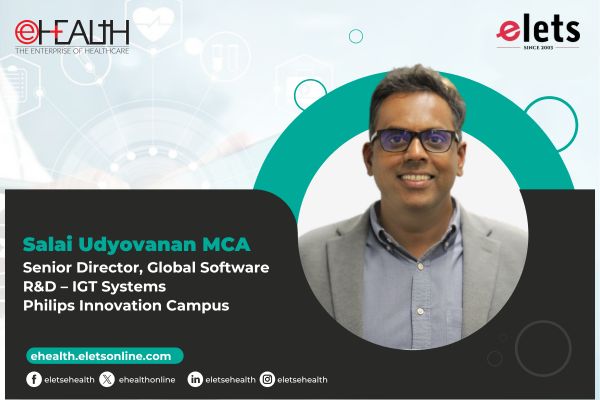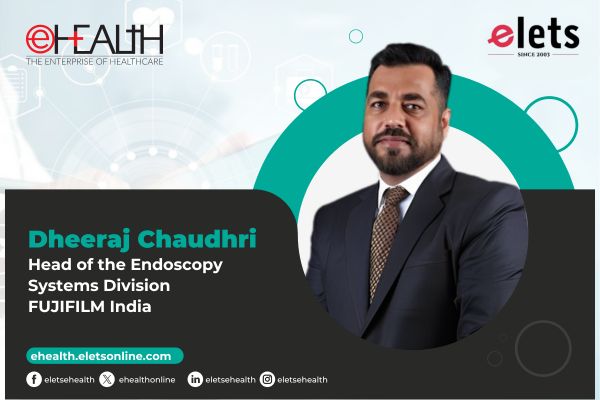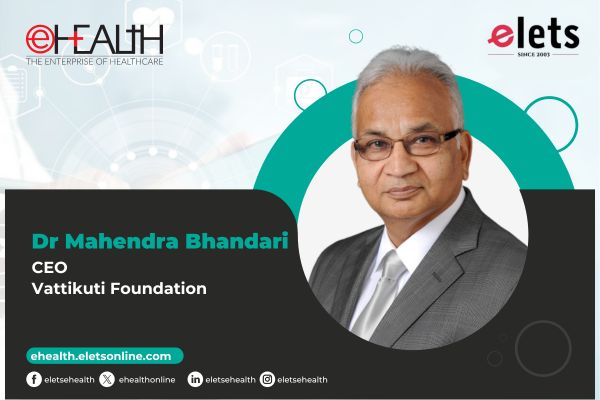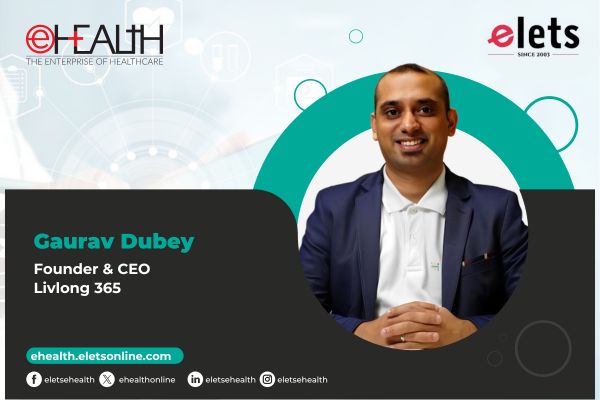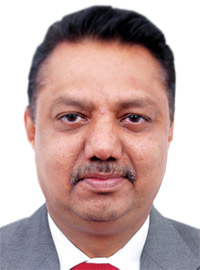 Dr Nagendra Swamy SC
Dr Nagendra Swamy SC
President
Manipal Hospitals

With a hospital information system already in place, Manipal Hospitals is planning an expansion spree by connecting all its hospitals through an HIS. Dr Nagendra Swamy oversees, among other responsibilities, the functioning and operations of the Bangalore Cluster of Manipal Hospitals.

In conversation with Divya Chawla, Dr Swamy throws light on the IT initiatives of Manipal Hospitals and its future plans in this space

What is your perspective on the growing implementation of IT in Indian hospitals?

Indian healthcare is a US $60 billion industry, which is expected to reach US $150 billion by 2017. Beds in excess of 1 million need to be added to reach a ratio of 1.98 per thousand population (world average is 3.3) at an investment of US $88 billion; 74 percent of which will come from the private sector. WHO recommends India to add 80,000 hospital beds a year for the next 5 years to meet the demands of healthcare sector.
With this boom in healthcare industry, in the coming decade, IT will play an important role in the management of Indian hospitals. Process management, patient care and management information systems are key areas where IT will add immense value for cost optimisation and effective management. Unlike other industries like manufacturing, banking, insurance, pharma, aviation and insurance, where IT has became a business enabler and is helping these sectors to improve overall efficiency, enhance customer satisfaction, process standardisations, cutting costs, increase revenue, and bring in more transparency, the healthcare sector, which has so far been bit conservative from the perspective of IT usage, has started realising that IT can really add value to the business. As a part of this understanding, the major hospitals in India have started investing in IT and are engaging with reputed service providers in the healthcare IT domain. The key components of hospital digitisation include a clear strategy and roadmap, mandate from management, strong IT and functional leadership team identified to drive the implementation and adoption, reliable and cost effective partner for applications and infrastructure.
Electronic Medical Records (EMRs) are making their way into hospitals. Do you believe that Indian hospitals are ready to adopt EMRs in a big way and go paperless?
Indian corporate hospitals have already made substantial progress in implementation of EMR in their hospitals. Though complete paperless environment is challenging but 80 percent of this aim is achievable in immediate future. With user friendly initiatives and cost reduction it is possible to achieve this in private sector. Training and change management is the key challenge.
EMR has some 18-20 data components, which need to be captured in the system. These include details like patient history, chief complaints, diagnosis, clinical notes, lab diagnostics/results, medication, medication charts, pharmacy, operations, discharge summary, and so on. From the technical standpoint, this is not a big challenge and the system can be fine tuned to capture all these details. However, from the adoption perspective, Indian hospitals will need to manage the ‘culture change’ more effectively especially from the ‘clinical adoption’ perspective. For EMR to become successful, doctors will need to make use of the system and capture essential clinical information. I feel that hospitals integrating 100 percent EMR, considering they start this journey in a planned way, will take around 3-4 years for becoming paperless.
Please tell us about the health IT solutions installed at Manipal. How can an IT solution transform the functioning of a healthcare provider like you?
We have recently implemented HIS solution at our flagship hospital in Bangalore and the same HIS is implemented at our hospital at Jayanagar, Bangalore. This implementation covers core HIS system, LAB, OP and IP, pharmacy, MRD digitisation and materials management. This also covers integrations with finance system and lab equipment, etc. With this implementation, our flagship hospital has achieved around 80 percent of the planned digitisation initiatives and we are in the process of covering other network hospitals, also.
The HIS has transformed the functioning of key areas of our operations. Some of the benefits are enhanced patient safety through better decision making; reduced operational costs through reduction in staff required for back office tasks; better inventory management through accurate estimation of demand, timely procurement and distribution of medical and non-medical items; increased productivity and elimination of human error through seamless integration with medical equipment; improved patient satisfaction through reduced turnaround time at points of care; and appropriate revenue capturing through online charge capturing and tracking of all billable services thus resulting in revenue enhancement.
What has been your approximate spend on IT solutions? Also, share details about your IT vendor.
Our approximate IT spend is around 1 percent of the revenue. We have entered into a strategic partnership with Intersystems Corporation for HIS application at Manipal Hospital Bangalore and Manipal Malathi Hospital, Bangalore; 3i Infotech for IT Infrastructure management, data centre management, server and end user hardware and software support over a period of 5 years; and E4E for application support.
Managing medical records electronically can help the healthcare industry boost its operational efficiency, make life easier for doctors and help eliminate hassles for patients. EMR adoption would help doctors to access patient reports faster, enabling them to begin treating the patients promptly
Please share your experience of the IT implementation process at Manipal. What are the major benefits that IT has offered to you?
Our Chief Information Officer (CIO) prepares a detailed IT strategic plan in consultation with various stakeholders across our network hospitals and the senior management of Manipal. The IT strategic plan is prepared keeping our long terms business requirement in view and it covers all aspects of IT implementation like business applications, IT infrastructure, manpower, investment details and implementation timelines. The benefits achieved by us include simple decision making process that enhances patient safety; increase in revenues through online charge capturing and tracking of all billable services; reduced operational costs through reduction in staff required for back office tasks; better inventory management through accurate estimation of demand, timely procurement and distribution of medical and non-medical items; increased productivity and elimination of human error through seamless integration with medical equipment; improved patient satisfaction through reduced turnaround time at points of care; and improved decision making through online availability of information across departments.
How do you see the future growth of EMRs, considering that the technology is still not being fully utilised in the Indian subcontinent?
An added but important benefit of managing records electronically is minimising the use of paper. Going paper free not only helps save the environment, but also helps organisations cut costs in terms of time, effort and money.
As per the recent study conducted by Accenture, emerging EMR markets like Malaysia, Thailand, Brazil, Russia, India and China may experience rapid growth in the coming years. In fact, they may leapfrog developed nations’ levels of EMR adoption and usage. Managing medical records electronically can help the healthcare industry boost its operational efficiency, make life easier for doctors and help eliminate hassles for patients. EMR adoption would help doctors to access patient reports faster, enabling them to begin treating the patients promptly. For the patients, this would mean their treatment starts early and they recover sooner.
The present EMR modules provided by the HIS vendors are not very easy to use and are too rudimentary and user unfriendly. For smooth adoption and successful EMP implementation, the healthcare IT service providers will need to make sure that it is made simple to use and also it should be easy to extract the analytical data from the EMR module. There is also a need to standardise the EMR framework across India in line with the international best practices so that the service providers can provide a common EMR framework to all the hospitals in India.
Enlist the challenges faced by you while implementing the IT solution?
We have implemented TrakCare HIS in Manipal Hospital Bangalore and key challenge was to customise this solution to meet the requirement of Indian hospital environment. Training of more than 1,000 nurses and more than 200 doctors was another big issue. Further, streamlining infrastructure for better security and high uptime of servers, storage systems storing patient information also creates problems. Lastly, I think change management and clinical adoption of IT solutions is a big challenge.
What are your future plans for the expansion of IT solutions at various Manipal Hospitals?
We have plans to extend the centralised HIS to all our hospitals over a period of next 2-3 years. We want to streamline our IT infrastructure so that it supports high uptime to all our business applications, build dashboard reports for real time information. We also wish to implement strong back office solutions using SAP platform at all our hospitals. 
Be a part of Elets Collaborative Initiatives. Join Us for Upcoming Events and explore business opportunities. Like us on Facebook , connect with us on LinkedIn and follow us on Twitter , Instagram.
"Exciting news! Elets technomedia is now on WhatsApp Channels Subscribe today by clicking the link and stay updated with the latest insights!" Click here!







